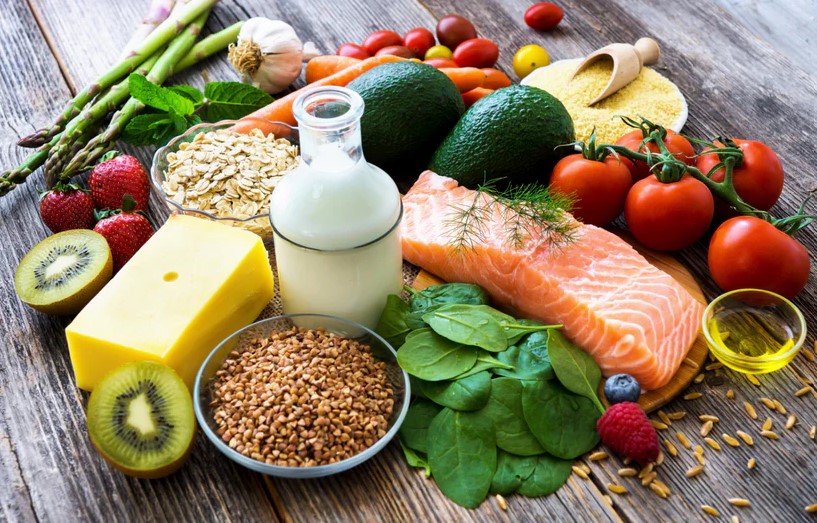The Ultimate Guide to Eating Healthy: Why Whole Foods Matter and How to Ditch the Junk
In the world of nutrition, it’s easy to get lost in a sea of conflicting advice, fad diets, and new “superfoods” that promise to transform your health overnight. But the truth is, when it comes to eating healthy, the answer isn’t that complicated: focus on whole, minimally processed foods. From lean proteins to fresh vegetables and fruits, whole foods provide the nutrients your body needs to function optimally.
In this article, we’ll explore why whole foods should make up the bulk of your diet, what to avoid (hint: fast food and sweets are major offenders), and how to start building healthier eating habits that stick.
Why Whole Foods Should Be the Foundation of Your Diet
Whole foods are those that are as close to their natural state as possible, with little to no processing. Think of foods like fresh vegetables, fruits, lean meats, eggs, yogurt, nuts, seeds, and legumes. These foods are nutrient-dense, meaning they provide a lot of vitamins, minerals, and other health-boosting compounds without unnecessary additives like sugar, preservatives, or unhealthy fats.
Research backs the benefits of whole foods. Numerous studies have shown that diets rich in whole foods are linked to lower risks of chronic diseases like heart disease, diabetes, and certain cancers. Plus, they support overall better health, including more stable energy levels, improved mental clarity, and better digestion.
Here’s why whole foods are the best choice:
1. More Nutrients, Fewer Empty Calories
Processed foods are typically stripped of their natural nutrients and loaded with empty calories—calories that provide little to no nutritional value. Whole foods, on the other hand, are rich in essential nutrients like vitamins, minerals, fiber, and healthy fats. For example:
- Vegetables like spinach, broccoli, and kale are packed with vitamins A, C, K, and fiber.
- Lean meats like chicken, beef, and fish are excellent sources of protein, iron, and healthy fats.
- Eggs and yogurt offer high-quality protein, healthy fats, and important nutrients like vitamin D, B vitamins, and probiotics.
By choosing whole foods, you’re fueling your body with what it needs to function properly, instead of filling it up with “junk” that contributes little more than excess calories.
2. Fewer Ingredients, Fewer Chemicals
One of the best parts of eating whole foods is their simplicity—many have only one ingredient! Compare this to highly processed foods, which often contain a laundry list of additives, preservatives, artificial flavors, and unhealthy fats. These ingredients can be difficult for your body to process and may contribute to inflammation and other health problems.
The fewer ingredients, the better. A good rule of thumb is to choose foods with five or fewer ingredients, and make sure they’re ingredients you recognize. If you can’t pronounce it, it’s probably better left out of your diet.
3. Healthier Protein Sources for Muscle, Recovery, and Satiety
Protein is essential for building and repairing tissues, making hormones, and supporting a healthy immune system. But not all protein sources are created equal. Whole food protein sources like lean meats, eggs, yogurt, and legumes provide high-quality protein along with important nutrients like iron, zinc, and omega-3 fatty acids.
Processed meats (think hot dogs, sausage, and deli meats) often come loaded with sodium, unhealthy fats, and preservatives like nitrates. These are linked to increased risks of certain cancers and heart disease. Sticking to whole protein sources—like grilled chicken, grass-fed beef, eggs, and Greek yogurt—will give you the protein your body needs without the unhealthy extras.
4. Fiber-Rich Foods for Digestion and Blood Sugar Control
Many whole foods, particularly vegetables, fruits, and whole grains, are rich in fiber. Fiber is essential for healthy digestion, helping prevent constipation, lowering cholesterol, and regulating blood sugar levels. Processed foods, on the other hand, are often stripped of fiber, which can contribute to blood sugar spikes, digestive issues, and increased hunger.
Fiber helps you feel full longer, reducing cravings and making it easier to control portions and avoid overeating.

What to Avoid: The Worst Foods for Your Health
While whole foods are nutrient-dense and support good health, the opposite is true for processed foods, especially those that are high in added sugars, unhealthy fats, and salt. These foods often taste great, but they offer very little in terms of nutrients and can contribute to a range of health issues, from obesity to heart disease.
Here are some of the worst offenders:
1. Fast Food
Fast food is notorious for being calorie-dense, high in unhealthy fats, and loaded with sodium and sugar. A single meal can easily exceed your daily recommended intake of calories, fat, and sodium. Eating fast food regularly has been linked to weight gain, increased risk of heart disease, and poor overall health.
Why is it so hard to resist? Fast food is engineered to be hyper-palatable, meaning it’s designed to be addictive. The combination of fat, sugar, and salt triggers a reward response in the brain, similar to what happens with drug addiction. This makes it easy to overeat and difficult to stop once you start.
2. Sweets and Sugary Snacks
Sugary foods like candy, cookies, cakes, and sodas may be delicious, but they wreak havoc on your body. High in calories and low in nutrients, they cause rapid spikes in blood sugar and insulin levels, leading to energy crashes and increased fat storage. Over time, a diet high in sugar can contribute to insulin resistance, type 2 diabetes, and heart disease.
Your body craves sugar because it’s a quick source of energy, and consuming it releases feel-good chemicals like dopamine in your brain. Unfortunately, the more sugar you eat, the more you’ll crave it.
3. Highly Processed Snacks
Chips, crackers, and other processed snacks may seem harmless, but they’re often packed with unhealthy fats, refined grains, and sodium. These foods are designed to be convenient and tasty, but they’re low in nutrients and easy to overeat. The more processed a food is, the fewer nutrients it contains and the more chemicals and additives it likely has.
Strategies to Start Eating Healthier and Ditch the Junk
So how do you go from craving fast food and sugary snacks to loving whole foods? It’s all about making gradual changes and adopting sustainable habits. Here are some strategies to help you get started:
1. Focus on One Change at a Time
Instead of overhauling your diet overnight, focus on making one small change at a time. This could be as simple as adding an extra serving of vegetables to your dinner or swapping your sugary breakfast cereal for eggs and fruit. Once that change becomes a habit, move on to the next one.
2. Plan Your Meals
Meal planning is one of the most effective ways to stay on track with healthy eating. By planning your meals and snacks for the week, you’ll be less likely to resort to fast food or unhealthy options when you’re hungry and short on time. Include plenty of whole foods in your meal plan, and prep ingredients in advance so cooking feels less daunting.
3. Keep Healthy Snacks on Hand
Cravings can strike at any time, so it’s important to have healthy snacks on hand. Stock your fridge and pantry with options like nuts, fruits, vegetables, yogurt, and hard-boiled eggs. This way, when you get hungry between meals, you’ll have something nutritious to reach for instead of chips or candy.
4. Hydrate
Sometimes, hunger is actually a sign of dehydration. Drinking enough water throughout the day can help you feel fuller and reduce cravings for unhealthy foods. Make it a habit to drink water with every meal and carry a water bottle with you wherever you go.
5. Read Labels
When buying packaged foods, make it a habit to read the ingredient labels. Look for foods with as few ingredients as possible, and avoid products with artificial additives, preservatives, and high amounts of sugar or sodium. If you can’t pronounce most of the ingredients, it’s probably best to leave it on the shelf.
6. Allow Yourself Treats in Moderation
It’s important to remember that healthy eating isn’t about perfection. It’s okay to enjoy a treat every now and then, as long as it’s in moderation. The key is to not let one indulgence turn into an excuse for a week of unhealthy eating. Enjoy your favorite foods occasionally, but focus on making whole foods the foundation of your diet.
Final Thoughts: Building a Healthier Diet One Bite at a Time
Eating healthy doesn’t have to be complicated. By prioritizing whole, nutrient-dense foods like lean meats, vegetables, fruits, eggs, and yogurt, and reducing your intake of processed foods, sugary snacks, and fast food, you can fuel your body with the nutrients it needs to thrive.
The more you focus on whole foods, the less you’ll crave unhealthy, processed options. With time and consistency, healthy eating will become second nature, helping you achieve your fitness goals, maintain a healthy weight, and feel your best every day.

